This article was co-authored by Kaveri Karhade, MD. Dr. Kaveri Karhade is a board certified Laser, Medical, and Cosmetic Dermatologist in the San Francisco Bay Area. Her areas of expertise are acne and hair loss. She has advanced training in injectables, lasers, surgery, and other cosmetic treatments, and has published extensive research in medical journals. She holds a BS from Michigan State University and a Doctor of Medicine (MD) from the University of Michigan Medical School. She completed her internship in Internal Medicine at New York University School of Medicine and her Residency in Dermatology at Brown University School of Medicine. Dr. Karhade is a fellow of the American Academy of Dermatology and a member of the American Society for Dermatologic Surgery.
There are 11 references cited in this article, which can be found at the bottom of the page.
wikiHow marks an article as reader-approved once it receives enough positive feedback. In this case, 80% of readers who voted found the article helpful, earning it our reader-approved status.
This article has been viewed 163,052 times.
Skin plays a significant role in the health of our bodies, but having soft, healthy skin is also important for self-esteem. There are many things that can prevent your skin from feeling soft and smooth, including exposure to the elements, irritants and pollutants, lack of moisture, and poor overall health. Getting and keeping your skin soft involves proper diet, following healthy routines, taking care of your skin inside and out, and avoiding things that could irritate or dry out your skin.
Steps
Getting Soft Skin
-
1Exfoliate weekly. Exfoliation makes your skin softer by removing dirt, oil, and dead skin cells. You can scrub your face with coffee grounds mixed with some mild soap,[1] or a store-bought exfoliation product. For relief of redness as well, look for something that contains green tea extracts and glycolic acid.[2]
- Avoid exfoliating more than once or twice a week, as exfoliating too often can cause skin irritation.
-
2Wash properly. Moisture loss and removing your skin’s natural oils can lead to dry and flaky skin, and bathing too often, bathing for too long, and using hot water can all increase moisture and oil loss. Bathe every other day if you can, use cooler water, use your hand or a soft cloth instead of a scrubber to apply soap, and limit your shower time to five or 10 minutes.[3]
- After your shower or bath, don’t rub your skin dry, as this can remove moisture and oil. Instead, gently pat or rub yourself with a fluffy towel.[4]
- When your skin is still somewhat damp, apply your favorite moisturizer.
Advertisement -
3Shave properly. If you choose to shave, save shaving for last when you’re bathing, because this will give your skin time to soften up. Use a moisturizing shaving cream and sharp razors with multiple blades. It’s also important to shave downward, or with the direction of your hair growth to prevent irritation.[5]
- Don’t shave first thing in the morning when you’re retaining water, as you won’t get as close a shave.
- Treat razor burn with a warm compress, and always moisturize after shaving.
- To avoid the added cost of shaving cream, you can use hair conditioner as a substitute, but avoid soap as it won’t lubricate your skin enough.
-
4Moisturize daily. Your skin doesn’t seem to mind what kind of moisturizer you prefer, as long as you use it often and regularly.[6] Always moisturize after bathing or shaving, before applying makeup, after removing makeup, and after doing dishes or getting your skin wet.
- Look for a moisturizer that has plant-based oils and hydrating ingredients like vitamin A, vitamin E,[7] cocoa butter, shea butter, lavender, and chamomile.
- For particularly dry skin, try a deep overnight skin conditioning. Before bed, apply a heavy-duty moisturizing cream to dry areas like your hands, feet, and elbows. Then, put on cotton socks and gloves, and wrap your elbows with a soft cloth.
-
5Keep your makeup brushes clean. Makeup brushes can harbor bacteria and spread from one area of your body to another, clogging pores and causing irritation. To avoid this, wash your brushes weekly with liquid soap and warm water. Allow them to dry out again before use.[8]
-
6Remove makeup before bed. For people who choose to wear makeup, sleeping with it on can clog your pores and lead to infections.[9] Before bed, use a gentle cleanser, lukewarm water, and soft cloth to remove your makeup. Pat your face dry and apply moisturizer.
- Use makeup sparingly if you do choose to wear it, as it can dehydrate and dry your skin. Look for brands that don’t contain dangerous ingredients, and that are hypoallergenic.[10]
-
7Apply skin-softening foods topically. There are many skin-friendly foods that are good to use both inside and outside of your body. For instance, potatoes can help reduce puffiness, while avocado can make your skin look fresh and plump. Citrus fruits, which shouldn’t be applied to the face, can be used as exfoliants, and pineapple has been known to brighten skin.[11]
-
8Treat yourself to a massage. Not only are massages relaxing and wonderful, but they also increase circulation, which helps bring nutrients, hydrating water, and a radiant glow to your skin. Moreover, oil massages can also be very moisturizing, so even if you don’t opt for a professional massage, treat yourself by massaging your hands, face, arms, legs, and body with your favorite oil before bed a couple nights a week.
Avoiding Common Irritants
-
1Shield your skin from dry cold. Humidity levels tend to drop in colder weather, which means less moisture in the air, and drier skin. To make matters worse, artificial heat further reduces moisture, leaving you with dry, itchy, flaky skin. You can help prevent dry skin by:
- Showering less in the winter.
- Moisturizing more.
- Installing a humidifier to add moisture back to the air in your home or office.
-
2Protect yourself from the elements. The cold, dry air of winter isn’t the only environmental factor that can cause your skin to be less soft. Exposure to wind can cause dryness and irritation, while UV exposure can cause premature aging, wrinkles, leathery skin, and more serious medical issues like skin cancer.
- Protect your skin from the sun with sunscreen, sun-protective apparel, and SPF makeups and moisturizers.
- Protect your skin from the cold and wind with gloves, hats, scarves, and other winter gear.
-
3Stay away from allergens and irritants. There are many things that can cause your skin to become blotchy, red, itchy, and flaky, including fabrics like wool, harsh detergents and fabric softeners, perfumes and fragrances, dyes, and non-hypoallergenic cosmetics and creams.
-
4Avoid dehydrating ingredients and products. Stay away from alcohol-based products that go on your skin, and anything containing sodium lauryl sulfate. It’s also important to watch what goes into your body, as diuretics like caffeine, alcohol, and cigarettes can dehydrate your skin, lead to wrinkles, and make your skin look sallow.[12]
Keeping Skin Healthy
-
1Eat for soft skin. Many healthy foods contain ingredients and nutrients that will keep your skin soft and radiant. Eat a balanced diet that’s loaded with fruits, vegetables, and whole grains, and a moderate amount of healthy fats. Skin-friendly foods include:
- Foods with a high water content, such as kiwi, cantaloupe, apple, watermelon, celery, cucumber, and zucchini.
- Foods that contain vitamin C and zinc, which help with collagen and elastin production. These include dark leafy greens, nuts and seeds, beans, mushrooms, citrus fruits, and berries.
- Omega-rich foods that fight wrinkles, such as hemp and flax.[13]
- Antioxidants like tomatoes, red and yellow peppers, berries, and other red, orange, and yellow foods. [14]
-
2Drink water instead of sugary drinks. While the eight cups of water rule is a generalization, it is important to stay hydrated. If you feel thirsty, your body is telling you that you need water, so drink up!
- Don’t fret over the natural sugar found in fruits, but you should avoid drinks like pop that contain lots of added sugar, which can lead to wrinkles and saggy skin.[15]
-
3Exercise regularly. Along with improving overall physical and mental health, exercise also increases circulation, bringing nutrients to your skin that make it soft and healthy. Also, the sweat helps to wick dirt and bacteria away from your skin, which can help to keep pores clear. Always be sure to at least rinse off with cool water after a workout to remove sweat and dirt.
-
4Get your beauty sleep. Collagen is the protein that keeps your skin taut and wrinkle-free, and this is created thanks to growth hormones that are secreted during sleep. A good night of rest, therefore, is necessary for smooth and soft skin.[16]
-
5Address medical issues. Many skin-related problems can lead to rough, red, blotchy skin that isn’t smooth or soft. Often, redness, scaly skin, itching, blisters, and excessive pimples can be treated with special medications or ointments, depending on the cause. Talk to your doctor or dermatologist about diagnosis and treatment if you suspect you may have skin problems such as:
- Acne
- Eczema
- Psoriasis
- Dermatitis
-
6Finished.
-
7Look into medical grade skin treatments. Medical treatments to smooth the skin include various forms of microneedling, lasers, and peels. They can be used to maintain the smooth quality of your skin or to make your skin smoother.
- Always consult with a board certified cosmetic physician or dermatologist before going for either of these treatments.
Expert Q&A
Did you know you can get expert answers for this article?
Unlock expert answers by supporting wikiHow
-
QuestionWhat products make your skin soft?
 Melissa JannesMelissa Jannes is a Licensed Esthetician and the owner of Maebee's Beauty Studio in Philadelphia, a single practitioner space providing quality services with individualized attention. Melissa is also a National Educator for Universal Companies. She received her esthetics degree at The Beauty School of Middletown in 2008 and is licensed in both New York and Pennsylvania. Melissa won the "Best of Beauty" award from Allure magazine in 2012 for the quality of her bikini waxing.
Melissa JannesMelissa Jannes is a Licensed Esthetician and the owner of Maebee's Beauty Studio in Philadelphia, a single practitioner space providing quality services with individualized attention. Melissa is also a National Educator for Universal Companies. She received her esthetics degree at The Beauty School of Middletown in 2008 and is licensed in both New York and Pennsylvania. Melissa won the "Best of Beauty" award from Allure magazine in 2012 for the quality of her bikini waxing.
Licensed Esthetician & Brazilian Wax Educator Try using a night cream or sleep mask for extra-soft skin. As you sleep, your skin tends to lose a lot of moisture. However, you can help prevent that by using a thick, moisturizing product, like a night cream, before bed. You can also use sleep masks, which are huge in Korea. You just slather it onto your skin before you go to bed, and you wake up and your skin is amazing!
Try using a night cream or sleep mask for extra-soft skin. As you sleep, your skin tends to lose a lot of moisture. However, you can help prevent that by using a thick, moisturizing product, like a night cream, before bed. You can also use sleep masks, which are huge in Korea. You just slather it onto your skin before you go to bed, and you wake up and your skin is amazing! -
QuestionHow do you get the softest skin?
 Melissa JannesMelissa Jannes is a Licensed Esthetician and the owner of Maebee's Beauty Studio in Philadelphia, a single practitioner space providing quality services with individualized attention. Melissa is also a National Educator for Universal Companies. She received her esthetics degree at The Beauty School of Middletown in 2008 and is licensed in both New York and Pennsylvania. Melissa won the "Best of Beauty" award from Allure magazine in 2012 for the quality of her bikini waxing.
Melissa JannesMelissa Jannes is a Licensed Esthetician and the owner of Maebee's Beauty Studio in Philadelphia, a single practitioner space providing quality services with individualized attention. Melissa is also a National Educator for Universal Companies. She received her esthetics degree at The Beauty School of Middletown in 2008 and is licensed in both New York and Pennsylvania. Melissa won the "Best of Beauty" award from Allure magazine in 2012 for the quality of her bikini waxing.
Licensed Esthetician & Brazilian Wax Educator
-
QuestionWhat kind of moisturizer will make my skin really soft?
 Kaveri Karhade, MDDr. Kaveri Karhade is a board certified Laser, Medical, and Cosmetic Dermatologist in the San Francisco Bay Area. Her areas of expertise are acne and hair loss. She has advanced training in injectables, lasers, surgery, and other cosmetic treatments, and has published extensive research in medical journals. She holds a BS from Michigan State University and a Doctor of Medicine (MD) from the University of Michigan Medical School. She completed her internship in Internal Medicine at New York University School of Medicine and her Residency in Dermatology at Brown University School of Medicine. Dr. Karhade is a fellow of the American Academy of Dermatology and a member of the American Society for Dermatologic Surgery.
Kaveri Karhade, MDDr. Kaveri Karhade is a board certified Laser, Medical, and Cosmetic Dermatologist in the San Francisco Bay Area. Her areas of expertise are acne and hair loss. She has advanced training in injectables, lasers, surgery, and other cosmetic treatments, and has published extensive research in medical journals. She holds a BS from Michigan State University and a Doctor of Medicine (MD) from the University of Michigan Medical School. She completed her internship in Internal Medicine at New York University School of Medicine and her Residency in Dermatology at Brown University School of Medicine. Dr. Karhade is a fellow of the American Academy of Dermatology and a member of the American Society for Dermatologic Surgery.
Board Certified Dermatologist
References
- ↑ http://www.treehugger.com/style/9-ways-to-get-naturally-gorgeous-skin-without-spending-a-cent.html
- ↑ http://www.realsimple.com/beauty-fashion/skincare/rich-products-soft-skin/deep-moisture
- ↑ http://us.hellomagazine.com/healthandbeauty/skincare-and-fragrances/201005313615/steam/skin/benefits/
- ↑ http://www.redbookmag.com/beauty/makeup-skincare/tips/g1027/how-to-get-soft-skin/?slide=2
- ↑ http://www.goodhousekeeping.com/beauty/anti-aging/tips/a20754/mistakes-shaving-your-legs/
- ↑ http://www.redbookmag.com/beauty/makeup-skincare/tips/g1027/how-to-get-soft-skin/?slide=2
- ↑ http://www.realsimple.com/beauty-fashion/skincare/rich-products-soft-skin/deep-moisture
- ↑ http://www.treehugger.com/style/9-ways-to-get-naturally-gorgeous-skin-without-spending-a-cent.html
- ↑ http://www.goodhousekeeping.com/beauty/anti-aging/tips/g1273/surprising-things-ruin-skin/?slide=2
- ↑ http://www.indiatimes.com/health/healthyliving/10-cosmetics-that-can-harm-your-skin-236874-7.html
- ↑ http://www.treehugger.com/style/9-ways-to-get-naturally-gorgeous-skin-without-spending-a-cent.html
- ↑ http://www.besthealthmag.ca/best-looks/skin/6-tips-for-softer-skin?slide=5
- ↑ http://www.besthealthmag.ca/best-looks/skin/5-foods-to-eat-for-healthy-glowing-skin?slide=2
- ↑ http://www.besthealthmag.ca/best-looks/skin/5-foods-to-eat-for-healthy-glowing-skin?slide=2
- ↑ http://www.prevention.com/beauty/natural-beauty/how-sugar-ages-your-skin
- ↑ http://www.sleepdex.org/beautysleep.htm
About This Article
To have soft skin, start by exfoliating your skin once a week to remove dead skin cells. For example, scrub your face with coffee grounds mixed with a mild soap, or use a commercial exfoliant. Additionally, moisturize your skin daily, including after bathing, removing makeup, or doing the dishes. Make sure to look for a moisturizer that has hydrating ingredients, like Vitamin A, Vitamin E, or cocoa butter. Then, protect your skin from harmful sun rays by wearing sunscreen or a moisturizer with SPF. For more tips, like how to eat the right foods to get soft skin, read on!
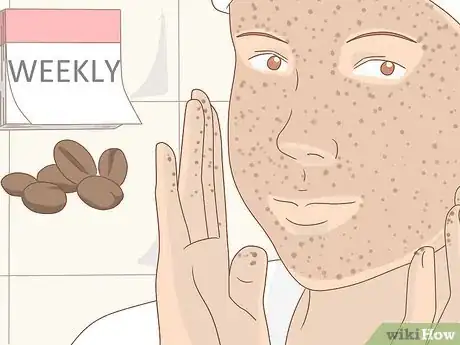


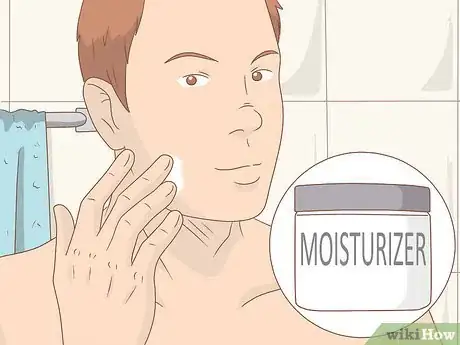


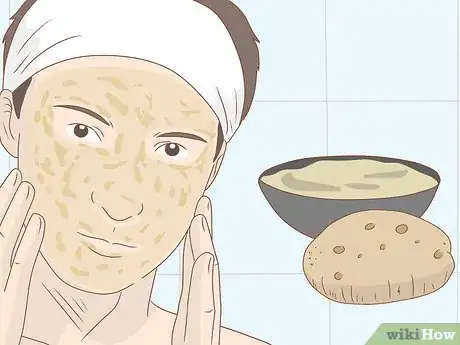
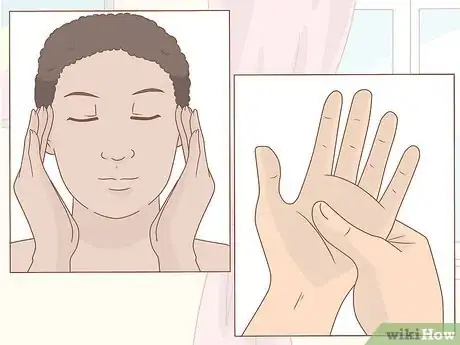


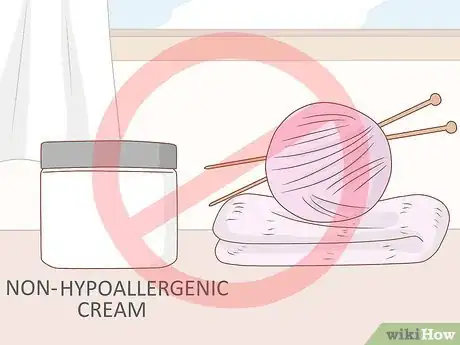











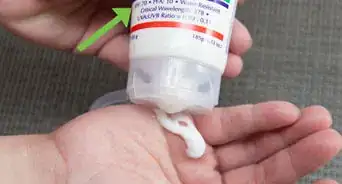

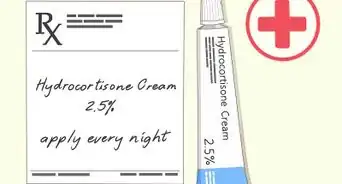

-Step-8-Version-3.webp)















































